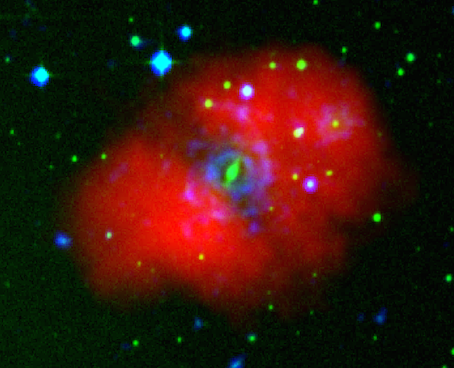| 11th of January 2017 |
|---|

|
| The HIX galaxy survey |
| by Katharina Lutz (Swinburne Uni) |
| We present the HI eXtreme (HIX) galaxy survey
targeting some of the most atomic hydrogen (HI) rich galaxies in the southern
hemisphere. The 13 HIX galaxies have been selected to host the most massive HI
discs at a given stellar luminosity. We compare these galaxies to a control
sample of average galaxies detected in the HI Parkes All Sky Survey (HIPASS,
Barnes et al. 2001). The stellar properties of the control sample, such as
morphology and star formation activity are similar to those of the HIX sample.
The picture shows the most HI massive galaxy in our sample (ESO075-G006, HI mass = 1010.8 solar masses). Red shows the HI, green the SuperCOSMOS optical B band image (stars) and blue the GALEX near ultraviolet image (young stars). Examining the Australia Telescope Compact Array (ATCA) HI imaging and Wide Field Spectrograph (WiFeS) optical spectra of ESO075-G006 reveals an undisturbed galaxy without evidence for recent major, violent accretion events. Instead we suggest a scenario where gas has been constantly accreted onto ESO075-G006 but the high specific angular momentum makes ESO075-G006 very inefficient in forming stars. Thus a massive HI disc has been built up over time. Reference: K. A. Lutz, V. A. Kilborn, B. Catinella, B. S. Koribalski, T. H. Brown, L. Cortese, H. Denes, G. I. G. Jozsa and O. I. Wong 2017, MNRAS, accepted. The preprint can be found on the arXiv today here. |